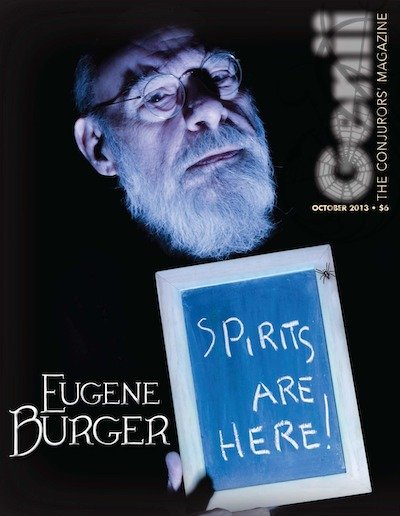Dustings #90
/Last week I mentioned a day of lectures to raise money, and I suggested they give a highlight for each lecture so people have a little better idea what they might get. As of the time of this post, you have less than 24 hours before these lectures start. But even if you’re getting to this post a day or two late, I would reach out to the email on that link and see if there’s a way to donate and get the lectures after the fact. Here, as requested, are the highlights from each performer:
Marc Weide: Marc will teach many of his comedy coin routines, including his unreleased Three-Fly. Learn all the subtleties, the thinking behind the choreography, and more from a man who's slowly becoming known as the 'master of the retention vanish' for good reason (hint: it's because he's really good at the retention vanish).
Paul Brook: Paul will teach, amongst other things, two previously unreleased effects - one for close-up, and one for stage. The close-up effect utilises a basic paper toy that challenges the audience's notion of free will. The stage routine taught will enable you to accurately discern the object eight audience members (who remain in the audience) are thinking of without technology involved, and the performer never touches anything.
Rainer Mees & Jan Becker: They will talk about their newly formulated Powerful Placebo Magic Personality (PPMP) model of performing magic. This has been a cornerstone of both Jan Becker's and Rainer's stage and television performances for many years.
Nathan Wilson: Nathan will teach an any card at any number that leaves the spectator in full control of when the trick ends. How? The deck is stuck in a glass bottle.
Christian Grace: Amongst other card effects, Christian will be sharing his routine FEELCAN where a spectator somehow intuits a thought of card and number by the use of touch and instinct.
Timon Krause: Timon will be sharing the technique behind his Which Hand effect, which has become known for being a Fooler on Penn & Teller's show.
Jonathan Levitt: Jonathan will share a psychological force that involves 2 audience members. He will teach his psychology when working with a spectator to give the impression that a selected card is arrived at with no involvement from the magician, while seemingly taking place completely in the spectator's hands!
If you like the idea talked about in Monday’s post about “magically” directing someone to a forced location, check out the October 2013 issue of Genii magazine. On page 82 there is an effect called City Walk where direction cards are mixed by a spectator and then followed to a (forced) location.
I think the mixing procedure with the Konami code is a bit more convincing. But the method in City Walk has some flexibility that might be useful in certain circumstances. Konami code will force the destination, but City Walk will force the whole path.
One of the simplest mentalism concepts is to thumbwrite a two-digit number (simple in concept, not necessarily execution). But, “Name a random two-digit number. Look, that’s what I wrote down,” is not super interesting. So looking for more intriguing ways to generate that two-digit number is a worthwhile pursuit. This email from supporter Christopher B. has an interesting suggestion…
I know at one point you were interested in premises for simple nail writing style prediction effects. I was thinking it would be interesting to have someone input into chatGPT a topic of their choosing, along with whatever input parameters they want to give it, then to have the person re-write as much or as little of the resulting text produced by the AI as they'd like in their own voice before handing the resulting text to you. After reading it quickly, you write down an estimate of what percentage of the text you believe was AI generated. Finally, you copy and paste the text into AI Content Detector - ChatGPT Plagiarism Checker to prove that your quick mental calculation was just as accurate as a plagiarism detecting site would produce.
It’s perhaps a bit too involved for most people and most situations and possibly too obscure conceptually, but if you’re a teacher (where AI plagiarism is a huge issue) or someone who works in AI in some way, then I think the ability to sense the “humanity” of a given piece of writing could be pretty fascinating.

